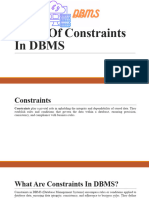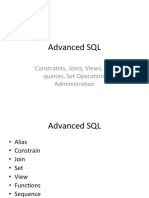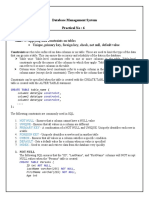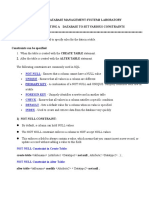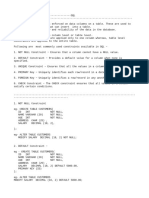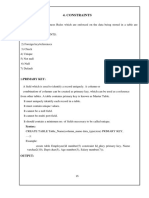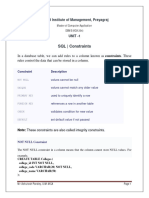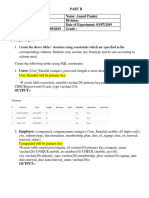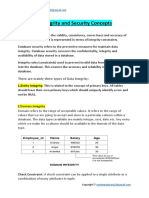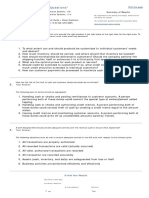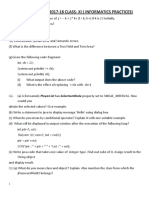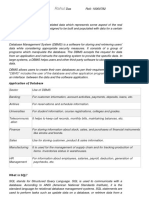0% found this document useful (0 votes)
19 views4 pagesDbms Notes
Constraints in a Database Management System (DBMS) are rules applied to table columns to ensure data validity and consistency. There are several types of constraints, including NOT NULL, UNIQUE, PRIMARY KEY, FOREIGN KEY, CHECK, DEFAULT, and AUTO INCREMENT, each serving specific purposes for data integrity. Constraints are essential for protecting data, maintaining relationships between tables, enforcing business rules, and enhancing database security.
Uploaded by
prafullnarang03Copyright
© © All Rights Reserved
We take content rights seriously. If you suspect this is your content, claim it here.
Available Formats
Download as PDF, TXT or read online on Scribd
0% found this document useful (0 votes)
19 views4 pagesDbms Notes
Constraints in a Database Management System (DBMS) are rules applied to table columns to ensure data validity and consistency. There are several types of constraints, including NOT NULL, UNIQUE, PRIMARY KEY, FOREIGN KEY, CHECK, DEFAULT, and AUTO INCREMENT, each serving specific purposes for data integrity. Constraints are essential for protecting data, maintaining relationships between tables, enforcing business rules, and enhancing database security.
Uploaded by
prafullnarang03Copyright
© © All Rights Reserved
We take content rights seriously. If you suspect this is your content, claim it here.
Available Formats
Download as PDF, TXT or read online on Scribd
/ 4
